Features of balancing at a rotation frequency of 220 Hz
In the opening lines, I want to sincerely thank Evgenii Ochkasov for providing the material for this article.
Instead of a preface.
On one of the rare sunny days under the sky of Bologoye, I was sitting at my mom's house enjoying her magnificent pancakes with fragrant raspberry jam, washing them down with currant and mint tea. Mom, standing by the stove, looked at me, smiled, and said:
'You look so much like Kurchatov with that beard.'
Slightly choking on my tea from such a comparison, I coughed and replied with a smile:
'You know, just the day before yesterday, my boss offered me a choice between two research institutes, one of which is the Kurchatov Institute, and I decided to work there starting this Thursday.'
'Really? How interesting! And what will you be doing there, my son?'
'I'll be balancing a vacuum pump for a rocket engine.'
'Wow! Good luck!'
On Thursday, after a fairly tedious procedure of obtaining passes for myself and the equipment, I walked through the territory of the research institute with two colleagues, recounting how my mom said I looked like Igor Vasilyevich. The senior of the two, Alexander, said:
'You have a very smart mom if she knows who Igor Vasilyevich is.'
'That's one way to put it, but that's not the point,' I replied. 'I'm just from the city next to the nuclear power plant and I live on Kurchatov Avenue. Everyone in our city knows him.'
And all three of our faces stretched into a synchronous smile...
Then, out of habit, I started asking leading questions about what, why, and how, to get to the essence of the work. And that's when the client mentioned that when the unit operates at 160 Hz, it behaves one way, but when it reaches 200 Hz and above, the entire set of monitoring and metering equipment starts shaking so much that it becomes worrisome, and the sound becomes unpleasant.
'What are its operational speeds?' I asked.
'From 190 to 220 Hz,' Alexander replied.
Understanding that surprises might await me at these speeds, I contacted Evgenii Stepanovich and shared my concerns:
'...there's a situation. I recall hearing somewhere that measurements are done in microns up to 200 Hz, but above that, they need to be measured in millimeters per second.
'Here's the deal, lad: measure in both, and then publish the results. I think it might be useful not just for you.'
And that's what I did.
So, the vacuum pump is part of a rocket engine. In the photo provided of the overall installation, it's highlighted in orange."
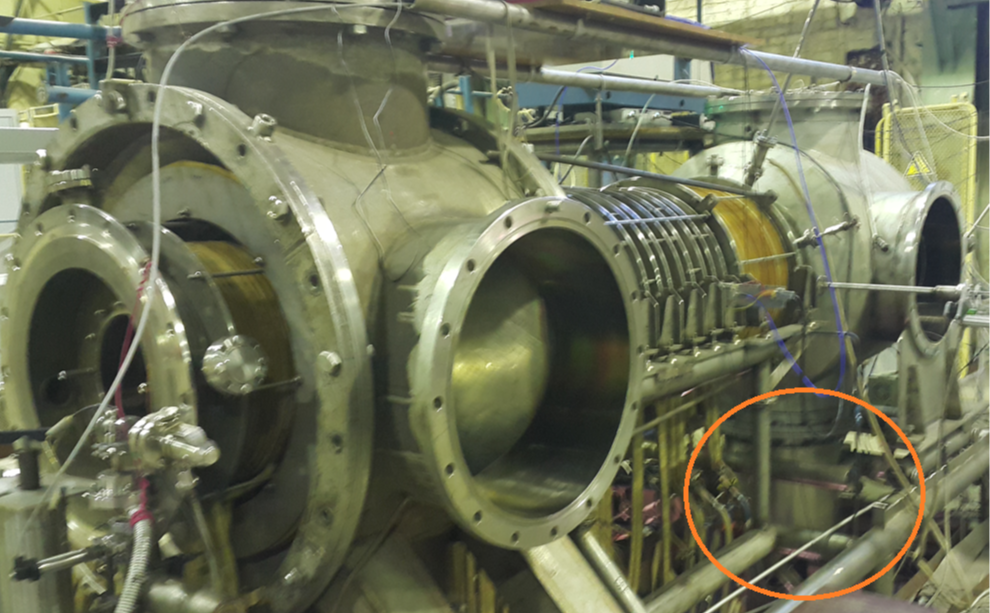
The unique feature of its balancing was that the phase detector read through glass, and I was concerned that it would glare and the measurement results would be unsatisfactory.
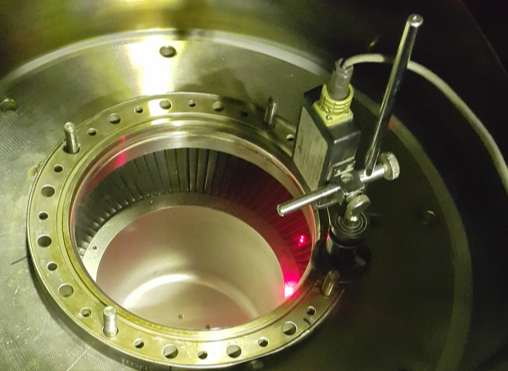
But it turned out that I was facing another problem, which I'll mention a bit later. I installed two sensors at a 90-degree angle on the lower pump flange, with one of them oriented towards the exhaust pipeline.
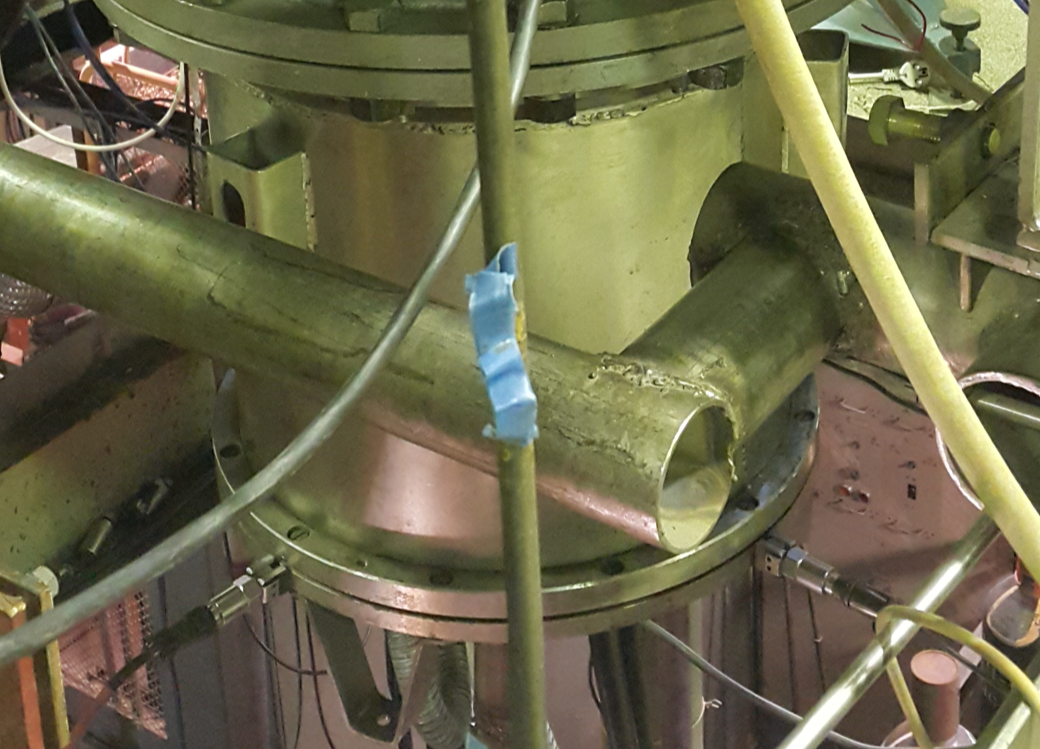
When the client turned the pump on, he began observing the acceleration of the unit on the instrument display. It took a long time for the vacuum to build up; the machine revved up to 170 Hz for almost half an hour. When it stabilized, Alexander asked, 'Is this sufficient, or do you want to see what happens at 190 Hz?'
'Let's not waste time; we'll balance it at 170 first, then consider going higher.' – I said
As a result, the balancing outcome and the values of the rotational component of vibration velocity and vibration displacement are presented in the table.

Later, on the following day, the balancing process continued, and we started reaching speeds higher than 200 Hz. As Alexander explained, this was the minimum operating speed for the setup. As the speed increased, at around 190 Hz, a noise emerged, which became fluctuating as the rotation frequency increased, and at approximately 198 Hz, the phase detector signal suddenly disappeared. No matter how much I tried or rotated the marker, the phase information wouldn't return. We had to stop and check if the reflective marker had been sucked in by the deep vacuum. However, it turned out that it hadn't, and when we slowed down to 160 Hz, the signal reappeared, and the phase measurement resumed. It then occurred to me something I had heard from the instrument developer before—specifically, that at high speeds, a marker that's too narrow can slip past the measurements, requiring a wider one. After stopping the setup and depressurizing it, the marker was replaced with a new one, twice as wide as the previous. We restarted the process. At 220 Hz, the machine's rotations stabilized. This time, the balancing results appeared as follows:
What was notable was that on the balanced machine, the phase of vibration velocity remained stable, while the phase of vibration displacement began to fluctuate significantly, changing by more than 100 degrees. This ruled out the possibility of further calculating corrective loads based on vibration displacement parameters.
Even after installing balancing mass, an extraneous noise continued to trouble Alexander. He mentioned that another backup pump didn't behave or make noise like this one and suggested continuing the balancing process despite the vibration velocity component reading 0.05 mm/s. I realized that imbalance might not be the issue anymore and captured the enveloping spectrum to check for bearing defects. True to form, approximately 0,4 times the rotational frequency, precisely at 91,88 Hz, a peak with a modulation depth of 27,2% was detected—the so-called 'bearing cage peak'.
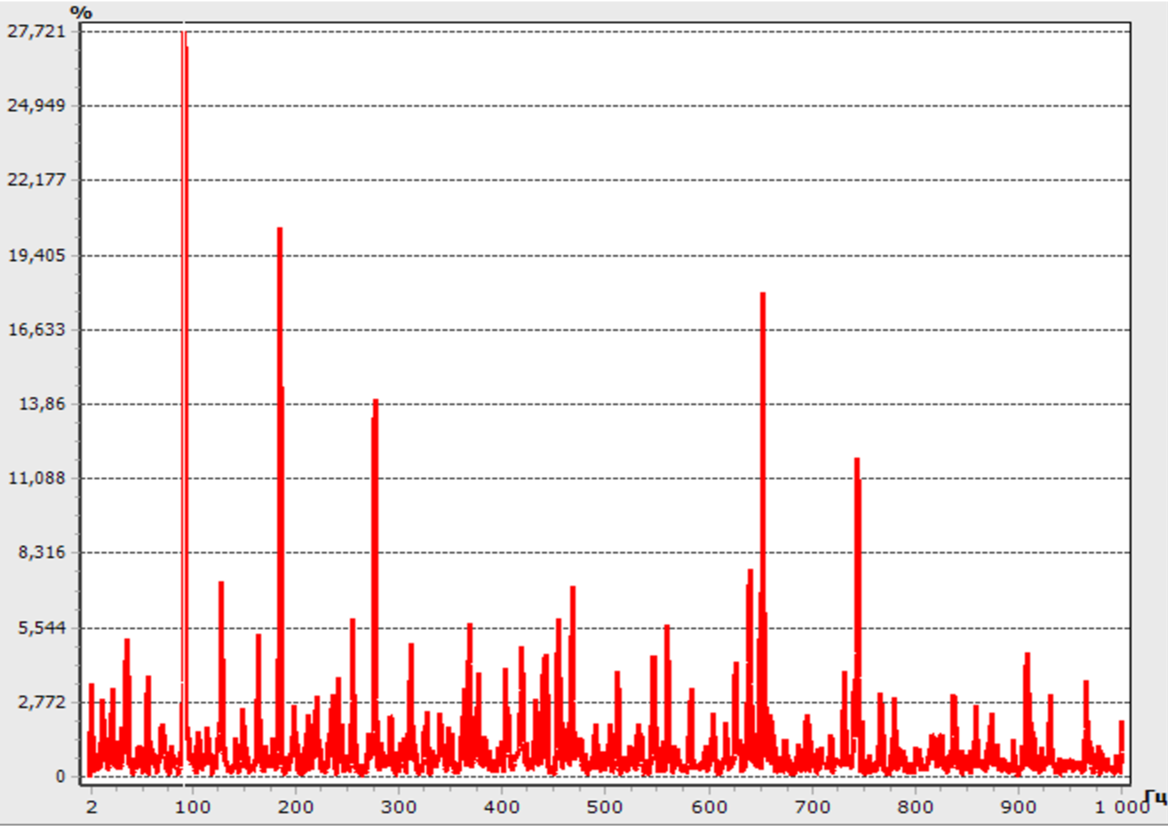
This is what I shared with the client, saying that it seems there's an issue with the bearing and it's about time to replace it.
When I was writing the report at home, a surprise awaited me. Specifically—in polar coordinates, the data from the latest run looked like this:
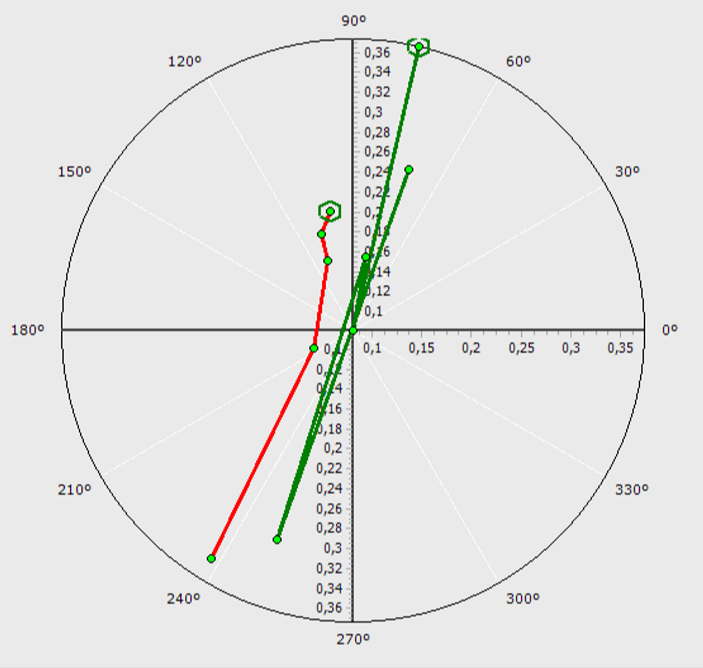
So, the phase wasn't just changing randomly; it was changing along a single axis. I remembered that the pressure pipeline was positioned at approximately the same angle to the sensor, and it seemed that it was causing the setup to oscillate. Consequently, I included a recommendation in the report: to install a flexible hose between the pipeline and the pump.
That's all for now. If anyone's interested in my scribblings or, on the contrary, has questions, feel free to write them in the comments.

Опыт интересный. Можно подробнее о требованиях к вибрации/балансировке и процессе "установки" грузов?
Про требования можно отдельный рассаз запилить, но если кратко, там же по дороге от кпп к установке я поведал историю о том как балансировал привод мясорубки у которого на шкиве было 4 балансировочных отверстия, причем установив в одно из них шпильку я увидел, что вектор направлен четко в ноль, как в лузу шар) и стал потихоньку эту шпильку обтачивать на наждаке. так дзинь дзинь, вкрутил, проверил, опять, дзинь дзинь, проверил. в итоге с 3,1 мм/с вибрация упала до 0,06 мм/с и механик азиат, увидев на дисплее 0,06 воскликнул: Вах! Мэньши нуля! Заказчик ухмыльнулся и то же попросил, мэньши нуля. Вот прям так и сказал, до второго знака после запятой, а лучше было бы превзойти себя и сделать 0,05 мм/с. И как видите мне это удалось. А груза устанавливались в штатные резьбовые отверстия М4 расположеные в рабочем колесе
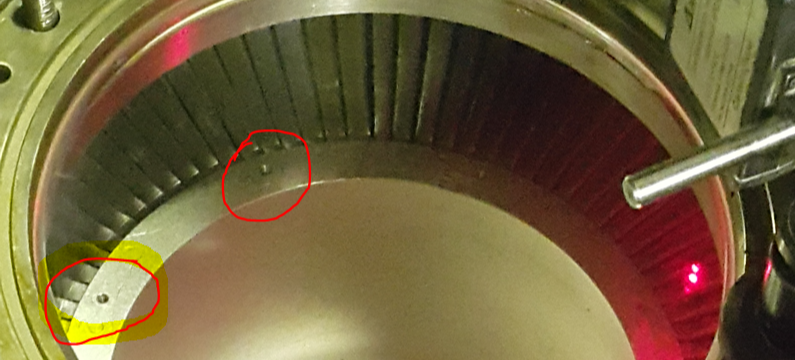
сначала мы вкручивали шпильки из нержавейки, а затем из алюминиевого сплава. Самый маленький груз весил 0,11 грамм. В итоге, уже по достижению 0,05 мм/с, Заказчик снова попросил рассчитать массу груза и угол, мол он потом его сам изготовит и поставит (т.к. надо было уходить, а машина как я сказал выбегала с пол-часа плюс надо было срывать вакуум и т.д. Я сделал. груз требовался массой 0,017 грамма и я только ухмыльнулся, желая удачи в его изготовлении. Кстати, мне реально пришлось натянуть сову на глобус и выдумать нормы для этой машины. Итоговая таблица после балансировки выглядела вот как